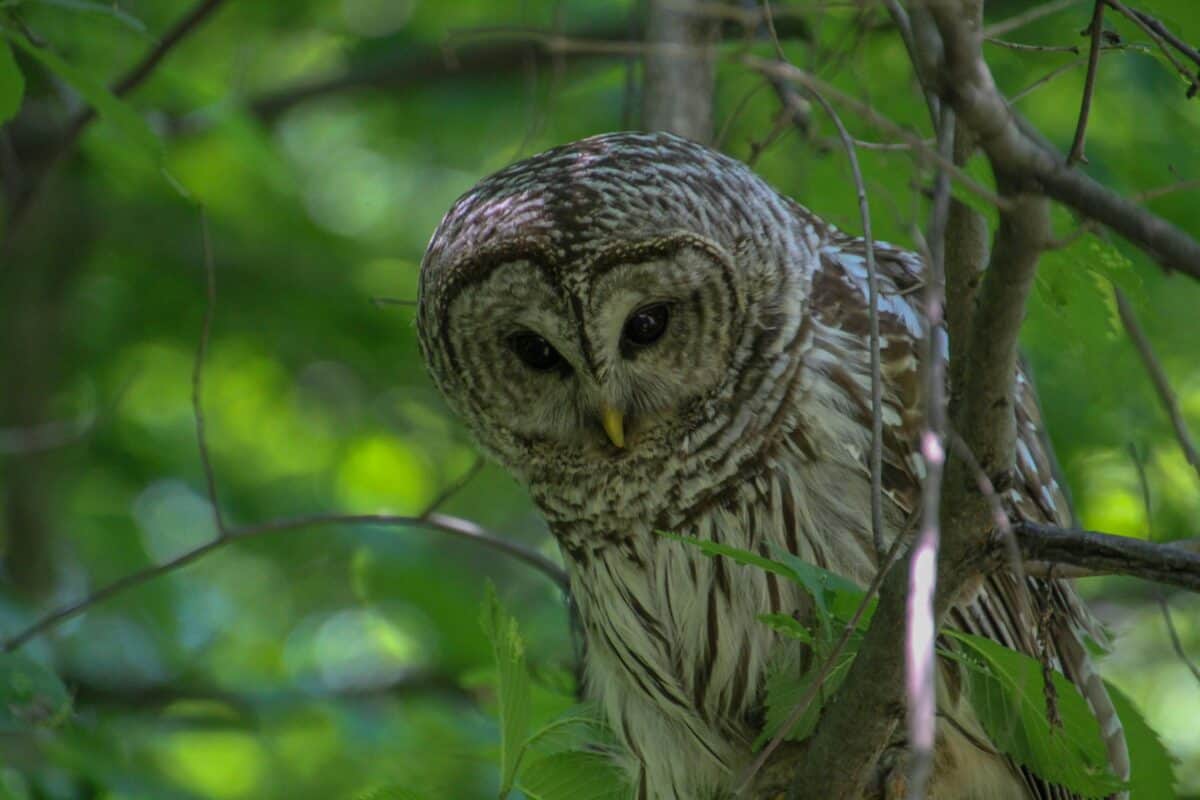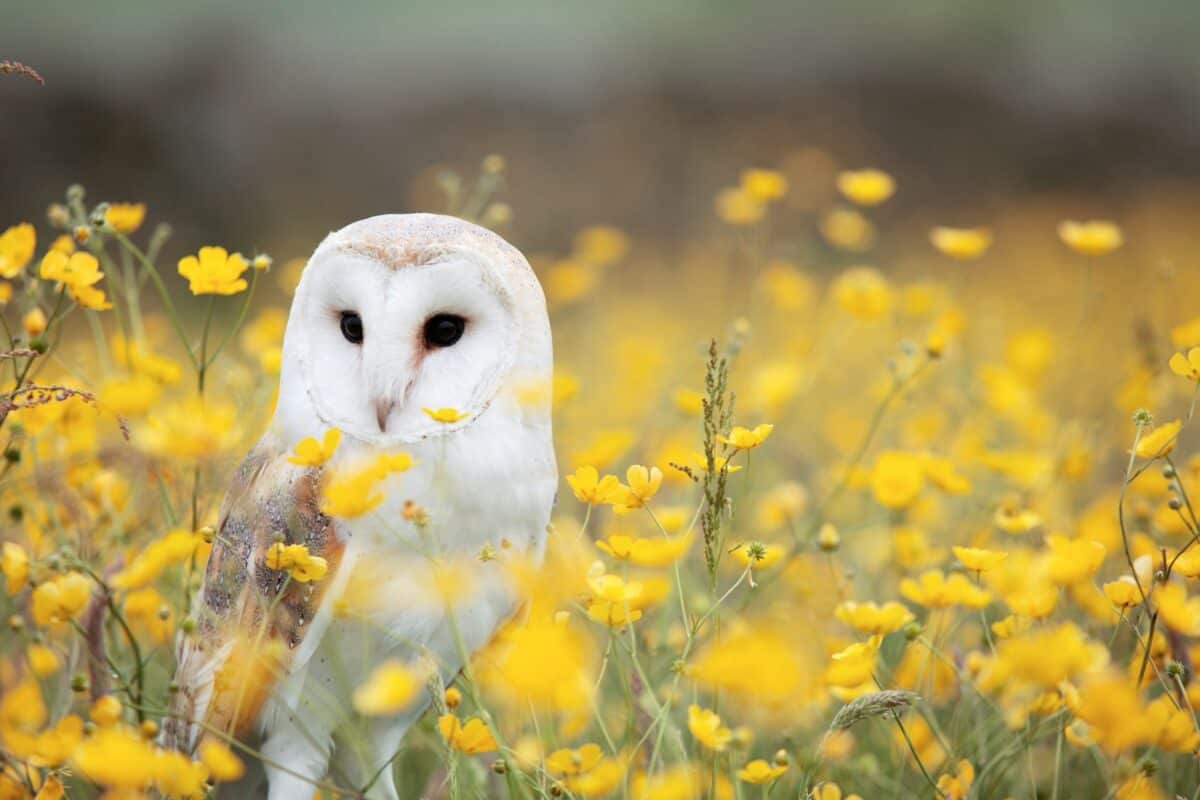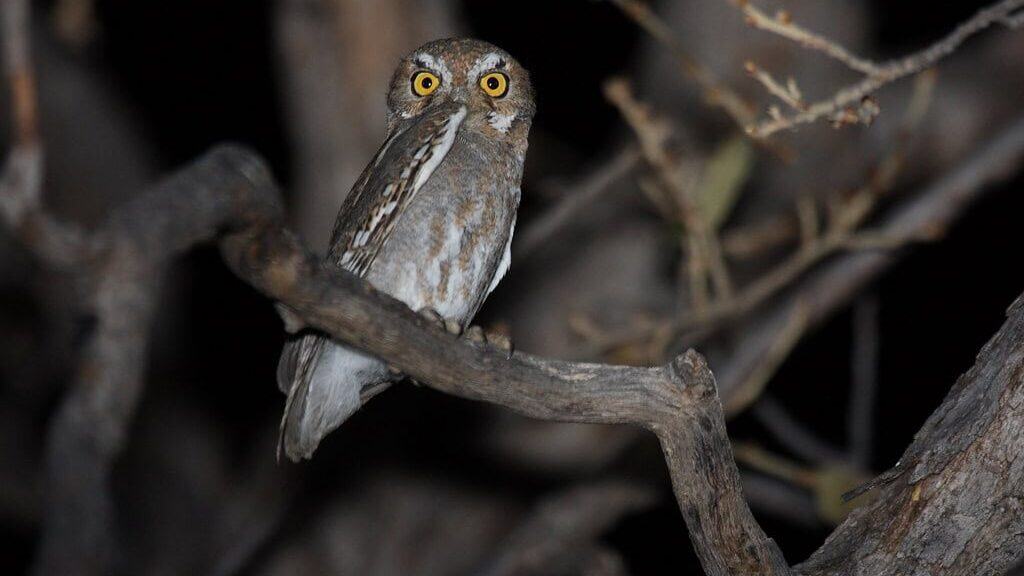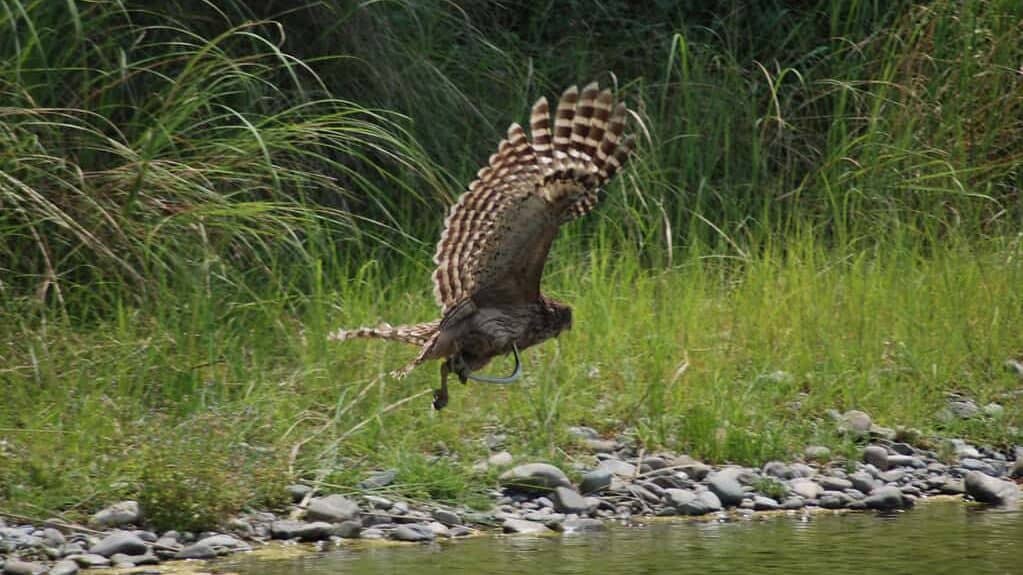Owls are remarkable birds of prey that have fascinated humans for centuries with their silent flight, piercing gaze, and exceptional hunting abilities. While many people think of owls as exclusively nocturnal hunters, the truth is more complex and fascinating. The owl family is divided into those that primarily hunt during daylight hours and those that prefer the cover of darkness. These evolutionary adaptations have led to significant differences in physical characteristics, hunting strategies, and overall behavior. Understanding these distinctions not only enhances our appreciation for these magnificent birds but also highlights the incredible diversity within the owl family. From the diurnal Northern Hawk Owl patrolling open landscapes under the midday sun to the nocturnal Barn Owl silently sweeping through darkness, each species represents a masterpiece of evolutionary adaptation to its specific hunting niche.
Visual Adaptations and Eye Structure

Day-hunting and night-hunting owls have evolved dramatically different eye structures to match their hunting schedules. Diurnal (day-hunting) owls, such as the Northern Hawk Owl and Snowy Owl, have eyes designed for bright conditions with a higher density of cone cells that provide color vision and greater visual acuity in daylight. Their pupils contract efficiently in bright light, and they generally have yellow irises that help reduce glare. These adaptations allow them to spot prey movements across long distances in broad daylight.
In contrast, nocturnal owls possess extraordinarily large eyes relative to their skull size, with vastly more rod cells that excel in low-light conditions. Species like the Barn Owl and Great Horned Owl have eyes that can gather up to 100 times more light than human eyes. Their pupils dilate extensively in darkness, and many nocturnal species have dark brown or black irises. Additionally, their retinas contain a specialized reflective layer called the tapetum lucidum that essentially gives them a second chance to capture any light that passes through the retina, dramatically enhancing their night vision capabilities.
Hunting Habitat Preferences

Day-hunting owls typically prefer open landscapes where their exceptional daylight vision provides an advantage. Species like the Burrowing Owl and Short-eared Owl frequent grasslands, tundra, marshes, and agricultural fields where they can easily spot movement against relatively uniform backgrounds. The Northern Hawk Owl often perches conspicuously atop tall trees overlooking clearings, using its hawk-like vision to scan large areas. These habitats provide maximum visibility during daylight hours and relatively few obstacles to impede hunting dives.
Nocturnal owl species have evolved to excel in more complex, often forested environments where their exceptional hearing and night vision give them advantages over their prey. The Barred Owl and Eastern Screech Owl hunt in dense woodlands, using trees for cover and listening for prey movements in the leaf litter below. The Barn Owl specializes in hunting across grasslands and farmland edges during complete darkness, using their phenomenal hearing to detect prey beneath vegetation or snow. These nocturnal specialists often avoid completely open areas that would expose them to daytime predators during their rest periods.
Auditory Systems and Hearing Capabilities

While all owls have impressive hearing, nocturnal species have evolved extraordinary auditory adaptations that far surpass those of their diurnal counterparts. Night-hunting owls like the Barn Owl possess asymmetrically positioned ear openings – one higher than the other – creating minute differences in sound arrival times that allow them to triangulate prey location with astonishing precision. The facial disk of feathers on nocturnal owls is typically more pronounced and acts as a satellite dish, collecting and focusing sound waves toward their ear openings. These specializations allow nocturnal hunters to detect prey by sound alone in complete darkness.
Day-hunting owls, while still having excellent hearing compared to most birds, rely more heavily on visual hunting and consequently have less extreme auditory adaptations. Their ear openings tend to be more symmetrical, and their facial disks are often less pronounced or complete. The Northern Hawk Owl, for example, has a relatively flat face compared to its nocturnal relatives, reflecting its greater reliance on visual hunting. This difference highlights the evolutionary trade-offs between visual and auditory specialization based on preferred hunting times.
Feather Adaptations for Hunting

Nocturnal owls possess specialized feather modifications that create nearly silent flight – a critical adaptation for hunting prey with keen hearing in darkness. Their primary wing feathers feature serrated leading edges that break up airflow and reduce turbulence, while their trailing feather edges have soft, comb-like structures that further dampen sound. The wing feathers themselves have a velvety surface texture that muffles the sound of air passing over them. These adaptations allow owls like the Great Gray Owl to approach prey undetected in the stillness of night, when even the slightest sound might alert potential victims.
Day-hunting owls, while still relatively quiet flyers compared to most birds, typically have less pronounced sound-dampening adaptations. Species like the Burrowing Owl and Northern Hawk Owl often rely more on speed and visual surprise when hunting, as their prey may be more alert to visual threats than auditory ones during daylight. Their wing feathers tend to prioritize efficiency in flight over absolute silence, and their hunting strategy frequently involves conspicuous perching followed by direct pursuit rather than the stealthy approach typical of nocturnal hunters. This difference reflects their adaptation to hunting in environments where being seen is less of a disadvantage.
Prey Selection Differences

Day-hunting and night-hunting owls often target different prey species based on what’s active during their preferred hunting times. Diurnal owl species frequently target day-active prey like ground squirrels, chipmunks, songbirds, and various insects. The Burrowing Owl, for instance, consumes large quantities of insects and small reptiles that are active during daylight hours, while the Northern Hawk Owl specializes in hunting voles and lemmings during their daytime activity periods. These owls have adapted to spot and pursue prey that relies primarily on visual detection of predators.
Nocturnal owl species are specialists in hunting creatures that emerge after dark. They primarily target nocturnal rodents like mice, rats, and voles, along with flying insects, bats, and occasionally amphibians that are active at night. The Barn Owl has specialized in hunting nocturnal rodents to such a degree that researchers can track local rodent population changes by examining their pellets. The Common Screech Owl often catches moths and other night-flying insects in addition to small mammals. This prey specialization has evolutionary advantages, as nocturnal prey species often have heightened hearing but reduced visual detection capabilities compared to diurnal animals.
Hunting Strategy Variations

Day-hunting owls typically employ active hunting strategies that take advantage of their excellent daylight vision. The Northern Hawk Owl and Snowy Owl frequently use a “sit-and-wait” approach, perching prominently on exposed branches or posts to survey large areas before making direct pursuit flights toward detected prey. Some species, like the Burrowing Owl, may even chase prey on foot across open ground – a behavior rarely seen in nocturnal species. Diurnal owls also benefit from being able to spot prey at greater distances, allowing them to make longer hunting flights from perch to prey.
Nocturnal owls have evolved strategies centered around stealth and sound detection. Rather than perching conspicuously, they often hide within foliage while listening intently for prey movements below. The Barn Owl exemplifies this approach, flying slowly and methodically just above ground level with its face oriented downward to maximize sound detection. When a sound is detected, these owls can strike with remarkable precision based primarily on auditory information. The Great Gray Owl can even detect and capture prey moving beneath up to 18 inches of snow, purely by sound – a hunting capability that would be nearly impossible for day-hunting species relying primarily on vision.
Activity Patterns and Energy Management

Day-hunting owls have metabolic and behavioral adaptations aligned with diurnal activity patterns. Species like the Northern Hawk Owl and Snowy Owl typically have higher basal metabolic rates to support their active daytime hunting. They tend to take advantage of peak rodent activity during morning and afternoon hours, often hunting in multiple shorter sessions throughout the day. During winter in northern regions, diurnal species must contend with extremely short daylight periods, which can constrain their hunting windows significantly. Many compensate by becoming extremely efficient hunters during the limited light available.
Nocturnal owls display different energy management strategies, with hunting activities concentrated during dusk, night, and dawn hours. The Eastern Screech Owl and Barred Owl typically begin hunting shortly after sunset when nocturnal rodents first become active. Their metabolic rates are often optimized for bursts of hunting activity interspersed with rest periods. Some nocturnal species, like the Great Horned Owl, are capable of hunting throughout the entire night when necessary. During winter months in northern latitudes, these night hunters have the advantage of extended darkness, though prey may be less active in extreme cold, forcing adaptations in hunting patterns.
Physiological Temperature Regulation

Day-hunting owls face significant thermoregulatory challenges, particularly those living in northern environments. Species like the Snowy Owl and Northern Hawk Owl have evolved exceptionally dense feathering – including feathered legs and feet – to maintain body temperature while active in freezing conditions. Their plumage often includes more insulating down feathers beneath their outer contour feathers. Additionally, diurnal species typically have higher metabolic rates that generate more body heat during activity periods, helping them remain efficient hunters even in cold daylight conditions.
Nocturnal owls face different temperature regulation challenges, as nighttime temperatures are typically lower than daytime ones. They’ve developed specialized adaptations to conserve heat while remaining active in cold nights. The Great Gray Owl, for example, has such dense facial feathering that its actual facial structure is much smaller than it appears. Many nocturnal species can reduce blood flow to extremities during cold conditions and have counter-current heat exchange systems in their legs that minimize heat loss. Their lower overall metabolic rates during rest periods help conserve energy for nighttime hunting when temperatures drop, and many can enter torpor (a state of decreased physiological activity) during extremely harsh conditions.
Nesting Behavior Distinctions

Day-hunting owls typically select nest sites that provide protection from visual detection by potential predators and shelter from harsh weather conditions. The Burrowing Owl, as its name suggests, nests underground in abandoned mammal burrows, providing excellent insulation and protection while hunting during daylight hours. The Northern Hawk Owl often selects broken-topped trees or old woodpecker cavities for nesting, usually in semi-open areas that allow for easy access and surveillance of hunting territories. Diurnal species typically time their breeding to coincide with peak prey availability during spring and summer.
Nocturnal owl species often select more concealed nest sites that provide daytime protection while they rest. The Eastern Screech Owl and Barred Owl prefer enclosed tree cavities that shield them from detection during daylight hours. The Barn Owl commonly nests in enclosed spaces like barn lofts, church steeples, and tree hollows that offer complete darkness during the day. Nocturnal species may have slightly different breeding timing that corresponds to peak nocturnal prey availability. Additionally, they typically defend their nest sites less conspicuously than diurnal species, relying more on camouflage and secrecy than active territorial displays during daylight hours.
Vocalizations and Communication

The vocalizations of day-hunting and night-hunting owls show distinct patterns related to their active periods. Diurnal species like the Northern Hawk Owl tend to be less vocal overall compared to their nocturnal counterparts. When they do vocalize, it’s often for territory defense or during breeding season, with calls that are typically higher-pitched and carry well across open habitats. The Burrowing Owl, for example, produces a “coo-coooo” call that’s effective for communication in open grasslands but less complex than many nocturnal species’ vocalizations.
Nocturnal owls have evolved elaborate vocal repertoires that play crucial roles in their nighttime activities. Species like the Barred Owl and Great Horned Owl use complex, low-frequency calls that travel effectively through forested environments at night. The Barn Owl produces an eerie screech rather than a hoot, which serves as both a territorial announcement and mate attraction signal. These vocalizations are precisely adapted to nighttime acoustics when background noise is reduced and sound carries differently. Nocturnal species also tend to have more varied call types for different purposes – from hunting partner coordination to territorial warnings – reflecting the greater importance of vocal communication when visual signals are limited in darkness.
Population Distribution and Adaptability

Day-hunting owls show distinct geographical distribution patterns that reflect their specialized adaptations. Species like the Snowy Owl and Northern Hawk Owl are predominantly found in northern latitudes where summer brings extended daylight hours that maximize their hunting opportunities. The Burrowing Owl thrives in open grasslands and deserts where its diurnal hunting strategy is advantageous. These species have typically evolved alongside day-active prey in specific ecosystems, resulting in narrower geographic distributions compared to many nocturnal species. Climate change is creating particular challenges for these specialized hunters as their prey and habitat conditions shift.
Nocturnal owl species generally show broader geographic distributions and habitat flexibility. The Great Horned Owl inhabits environments ranging from Arctic tundra to tropical rainforests, and from desert regions to eastern woodlands – one of the most widespread owl distributions in the Western Hemisphere. The Barn Owl has achieved an almost global distribution, absent only from polar and some desert regions. This greater distributional success may relate to the relative consistency of nighttime conditions and nocturnal prey availability across different biomes compared to the more variable daytime conditions. Additionally, nocturnal hunting strategies may provide greater flexibility to adapt to human-modified landscapes, as evidenced by species like the Barred Owl expanding their range into urban and suburban environments.
Conclusion: Understanding Owl Hunting Adaptations

The distinctions between day-hunting and night-hunting owls represent one of nature’s most fascinating examples of evolutionary specialization within a single bird family. These differences extend far beyond simple timing preferences, encompassing profound adaptations in sensory systems, physical structures, hunting strategies, and ecological niches. By understanding these adaptations, we gain deeper appreciation for the complex ways in which natural selection shapes species to their environments. Conservation efforts must account for these specialized adaptations, recognizing that diurnal and nocturnal owl species face different threats and require tailored protection approaches.
As climate change alters ecosystems and human development continues to transform landscapes, both day-hunting and night-hunting owls face uncertain futures that will test the limits of their adaptive capabilities. The preservation of diverse habitat types – from open grasslands to dense forests – is essential for maintaining healthy owl populations across their specialized niches. Whether silently gliding through midnight darkness or perched alertly in bright daylight, owls remind us of nature’s remarkable ability to evolve specialized solutions to the challenges of survival, and our responsibility to protect the conditions that allow these extraordinary adaptations to persist.
- 11 Differences Between Day Hunting and Night Hunting Owls - August 10, 2025
- Millions of Bats Fill the Texas Sky at Bracken Cave Each Night - August 10, 2025
- 14 Creatures That Can Count, Solve, and Strategize - August 10, 2025

